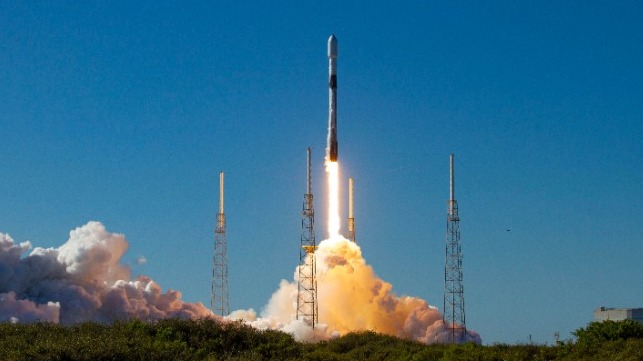South Africa Launches Satellites to Monitor Shipping off its Coastline

On Thursday, a new page turned in South Africa’s maritime industry when a SpaceX Falcon 9 rocket blasted off from Cape Canaveral, Florida.
The rocket launched the Transporter-3 mission, SpaceX’s third dedicated Smallsat Rideshare program. Onboard were 105 small commercial and government spacecraft, including a tiny set of three South African satellites - an inaugural component of space infrastructure to help the government monitor shipping activities off the South African coastline.
About one hour after the Falcon 9 launch, the three components of the MDASat-1 constellation were released into the orbit.
The constellation’s name, MDASat, is derived from the government’s Maritime Domain Awareness project. The three satellites will facilitate South Africa in monitoring its exclusive economic zone using AIS data. The Cape Peninsular University of Technology (CPUT) in Cape Town made the three satellites.
Currently, South Africa depends on third-party foreign AIS data providers. It was the desire for greater ocean sovereignty – a central focus of the government’s Operation Phasika development program - that prompted the allocation of resources for the satellite program.
Operation Phakisa was launched in 2014 by then-President Jacob Zuma, modeled around the government of Malaysia’s Big Fast Results methodology, which centered on key priorities like poverty, crime and unemployment. The first phase in implementation of the Operation Phakisa included a focus on unlocking the economic potential of South Africa’s oceans. South Africa hopes that the ocean economy will contribute $11 billion to GDP by 2033, creating job opportunities for South African youth.
In celebrating the launch of the MDASat constellation, Minister for Higher Education, Science and Technology Dr. Blade Nzimande - whose docket oversaw development of the program – said the government had invested $1.7 million over three years on the initiative.
“The MDASat-1 launch is a significant milestone for South Africa, marking the first launch of a satellite constellation developed entirely on the African continent. This will further cement South Africa’s position as an African leader in small satellite development. Furthermore, it will help the country capture a valuable share of the niche market in the fast- growing global satellite value chain,” said Nzimande.
The satellites program in South Africa originated out of a program of the French South African Institute of Technology at CPUT. It was aimed to develop human capital in space technology.
Three years ago, CPUT launched the most advanced South African nanosatellite named ZACube-2. It was meant to be a technology demonstrator for the MDASat. Its final constellation will consist of nine cubesats.
